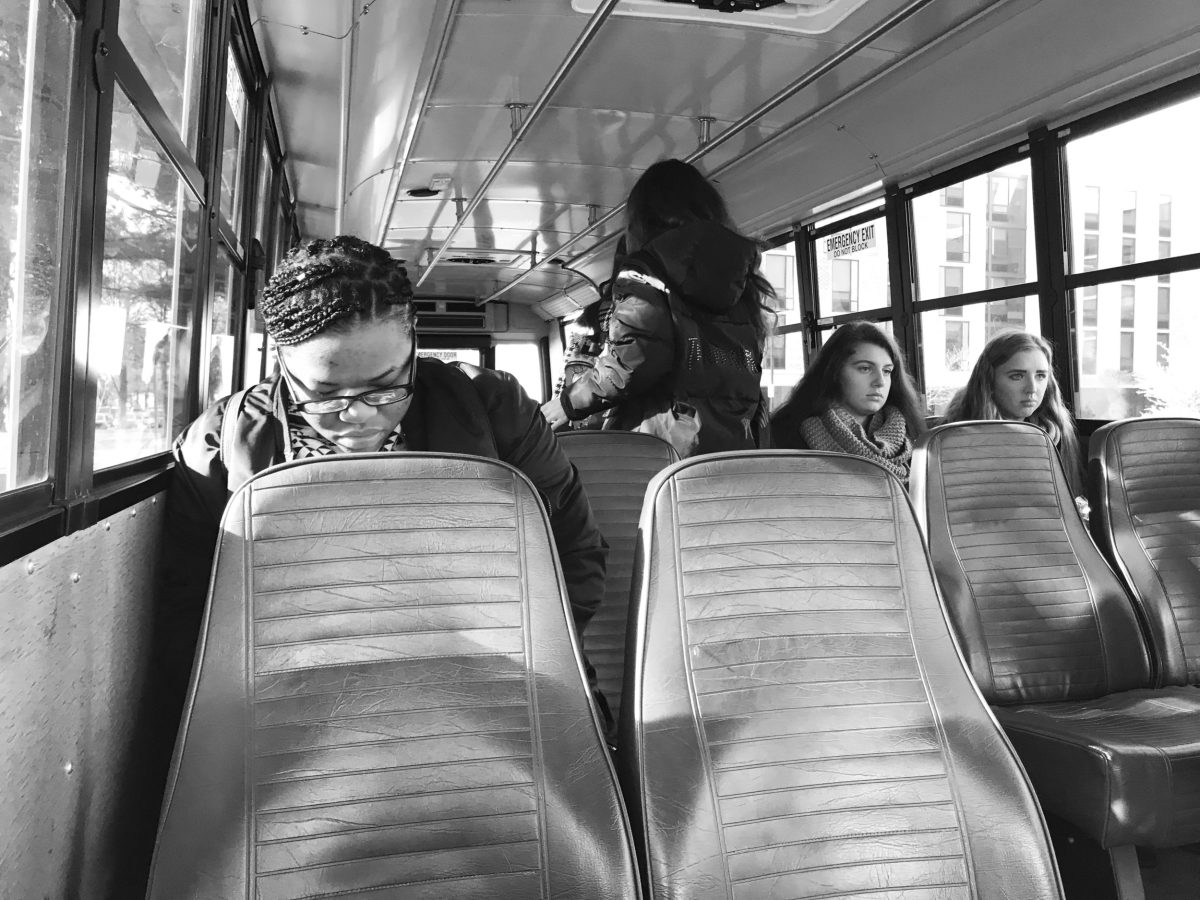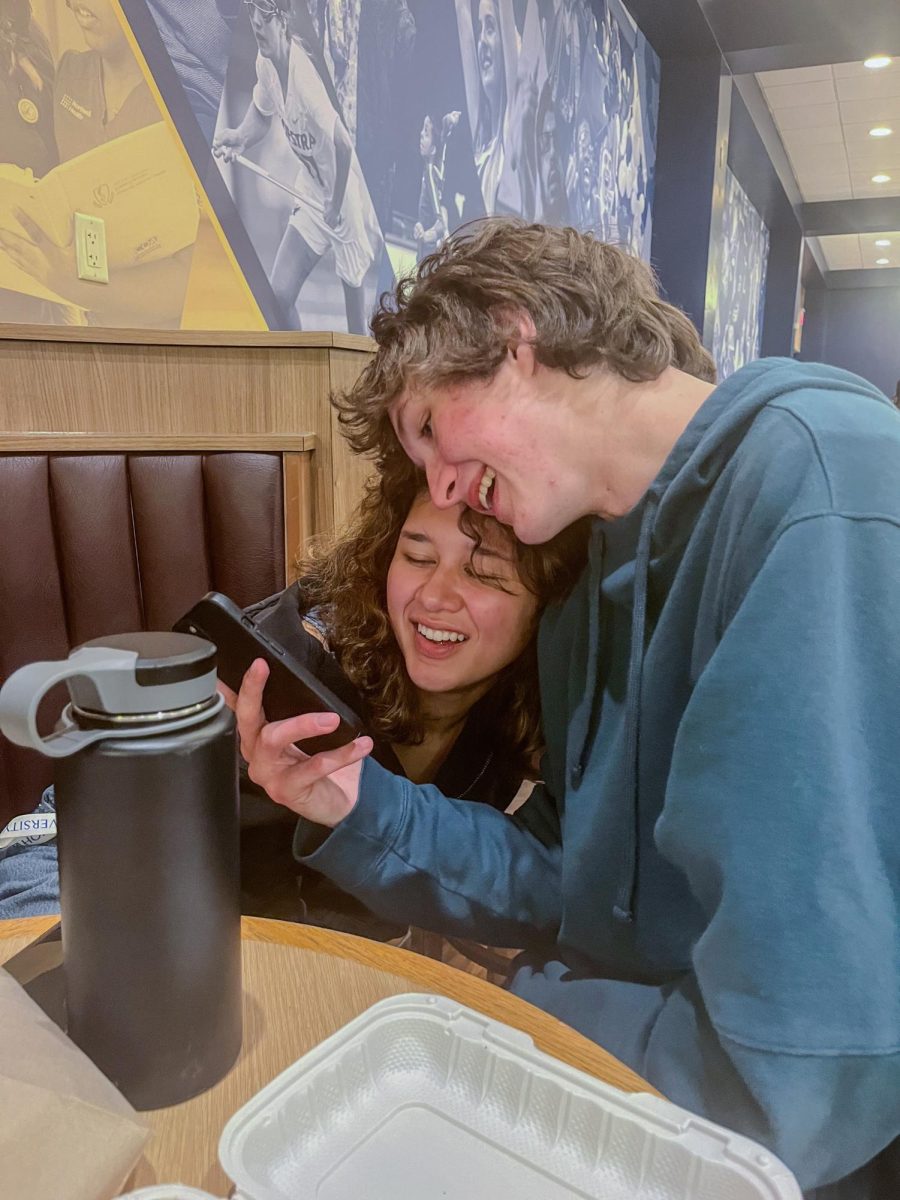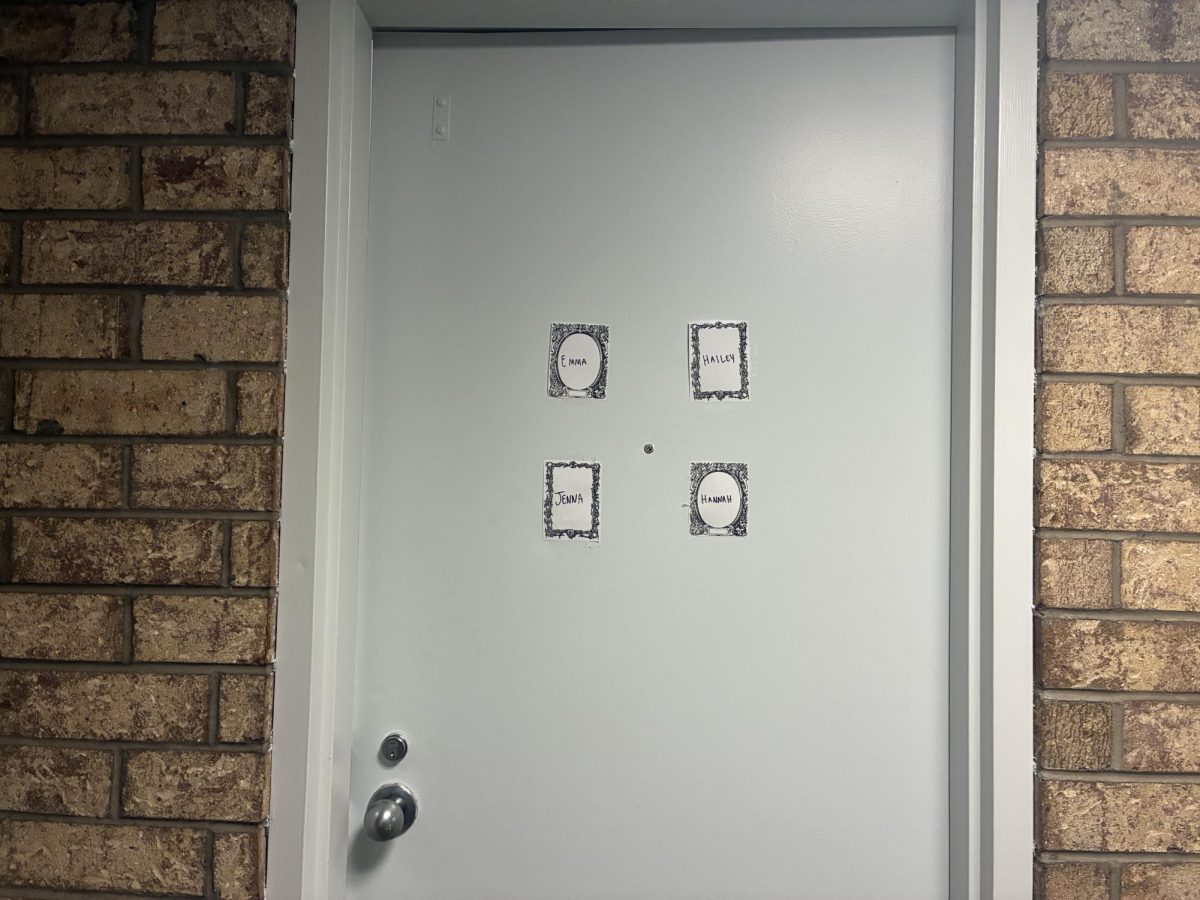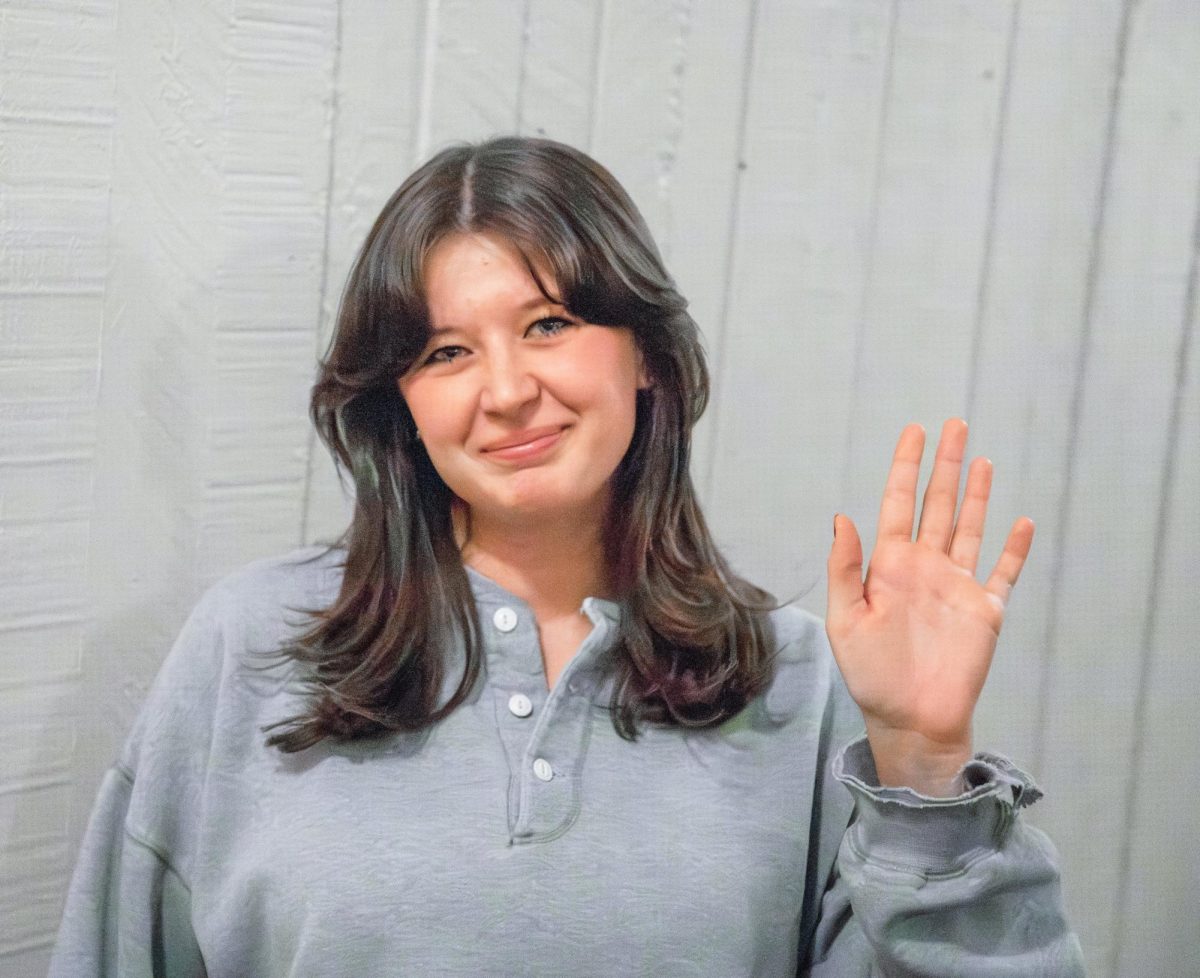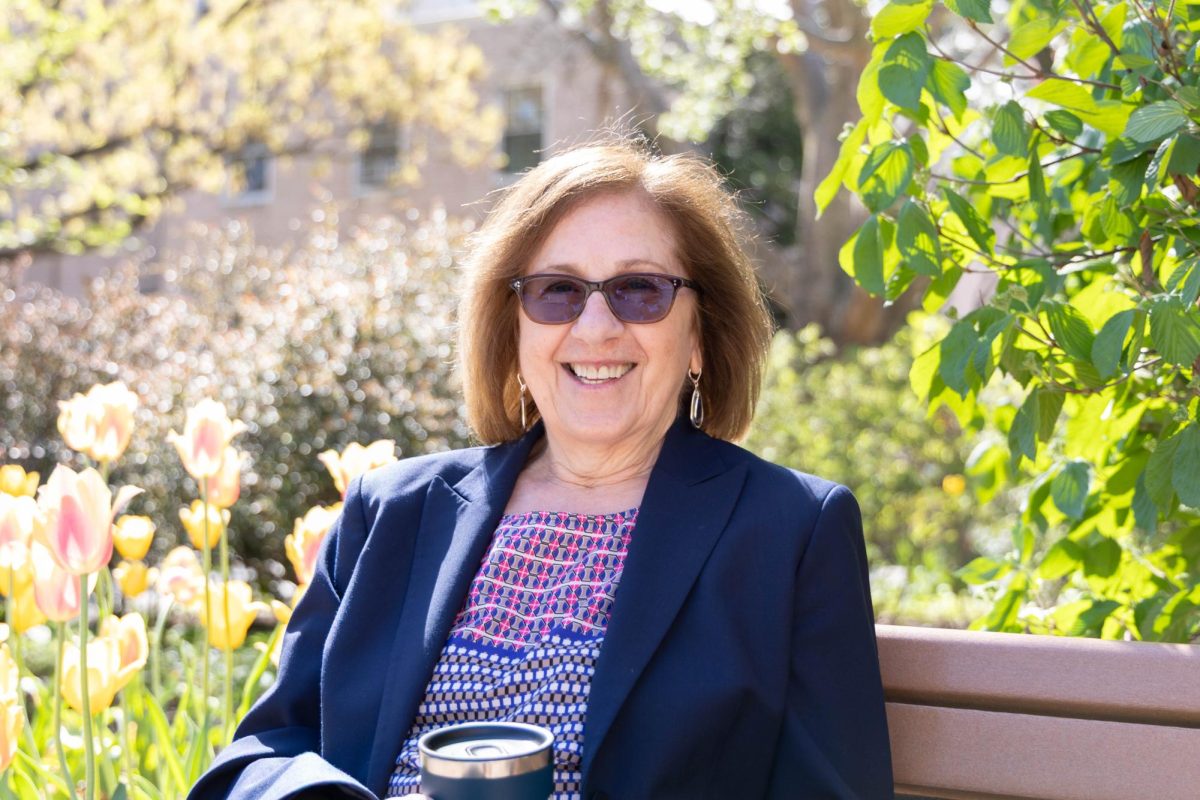I hopped on the shuttle at 9:12 p.m. I was the last person boarding and I could see the line ahead of me: a few students with umbrellas, a suitcase, dark raincoats and a cap. I sat down in the second seat from the front and looked back; our windows were obscured by the cold air’s condensation. Besides John Hanaberry, our driver, everyone on board seemed to be a student. We took off from the Student Center heading toward Breslin and around to the parking lot behind Adams Hall. Here a lone figure boarded carrying papers in a large leather messenger bag. She waited for the steady squeak of the shuttle’s brakes as Hanaberry pulled up, exhaled a breathy “thank you” as she climbed the stairs and entered to sit in the first row.
This was Kimberly Gilbert, associate professor of Psychology, and she takes the train shuttle.
Gilbert is the Director of the Autism Clinic at Hofstra and teaches in the Psy.D program in School-Community Psychology.
“Typically. I’m here [at Hofstra] anywhere between 12 and 3 in the afternoon to 9 o’clock at night,” Gilbert said.
Her work schedule coincides perfectly with the night train shuttle toward Mineola, where Hanaberry was taking us.
Through the drizzly panes of condensed glass, we could barely make out the moving landscape. Our conversation drifted like the obscured scenery, from place to place, hitting lowlights and highlights in random order. I asked about her commute home.
“It’s a great way to connect with others – being on the bus,” Gilbert said.
Gilbert has been a professor at Hofstra for over a decade.
“Every time I go to campus I take the bus and the train,” Gilbert said. “There are students from our program that ride the bus, [and] it’s been a nice time to hear how they’re doing in a more casual setting rather than in a classroom. It’s kind of all inclusive. It’s the way we get where we’re going, but we all do it together, so there’s a community in a sense with everyone on board.”
“Sometimes you end up sitting next to someone,” Gilbert said. “And you learn a lot about what they do. I enjoy that. Last week, I sat next to someone in the special education department and I just loved getting to talk to her and learning about her career and her area of expertise. I was fascinated.”
Her commute lasts approximately an hour and 15 minutes, but as she told me, “that’s door-to-door.” She’s taken the shuttle for four years now and prefers it to driving.
“I can drive, but I don’t drive,” Gilbert said. “I used to have to allot two hours each way for driving because you never know about the traffic because you never know what you’re going to encounter going across the city or leaving the city. I did that for a while until I realized I could be sitting on the train reading and emailing and doing those things rather than stressing because I like to be on time. It is really stressful if you’re driving and you get traffic, because there’s nothing you can do about that. I’m also not leaving such a footprint in the sense of the environment. It’s nice to use what’s available rather than bringing out a car and adding to the environment in a negative way.”
At Mineola, a single student boarded the bus. Gilbert had left for the last hour of her commute. As we waited, Hanaberry told me of the professors he’s driven to and from Hofstra.
“I’ve been here a long time so I know a lot of these professors. We’re very cool with each other. We have conversations that you might have with an acquaintance.”
Hanaberry, “like strawberry,” he told me, has been driving the train shuttle for 21 years and has been both purveyor and a participant in the passing community between the seats of the university’s private transportation vehicles.
“The professors rely on this shuttle just like someone who owns a car relies on a car to get to and from work,” he said. “They totally depend on it, and they told me this themselves.”
The shuttle operates on a consistent basis. “24 hours, seven days a week,” Hanaberry said.
Hofstra’s shuttles are a private courtesy transportation service reserved for students, faculty and staff that go to the university. The public isn’t allowed to ride the shuttles unless they’re a visiting family member or an alumnus coming to the campus.
“I don’t let anybody on here who doesn’t have a Hofstra ID,” Hanaberry said.
The students and faculty who do ride the Hofstra bus are, like Gilbert and her students, participants in a uniquely protracted community that stretches pass the classroom and into the extemporary milieu of the shuttle.
“There are times when students come on here and they’ll run into one of their professors, or they’ll come on at the same time as one of their professors right out of class,” he said. “And they’ll come in here, and they’ll sit down and they’ll talk about whatever that lesson was that day. Or they might not even talk about that at all. They might talk about politics, something completely different from the class. They might talk about just life in general. I’ve heard it. I myself have had conversations with professors on here that I’m cool with.”
Hanaberry, alongside the students and faculty who ride the train shuttle, adds disjointedly to a shifting whole. As fungible parts in a transient community, they showcase university life in condensed form, a microcosm of Hofstra at large.
“Everyone’s kind of going in their own direction,” Gilbert said. “But each person has their own story.”

